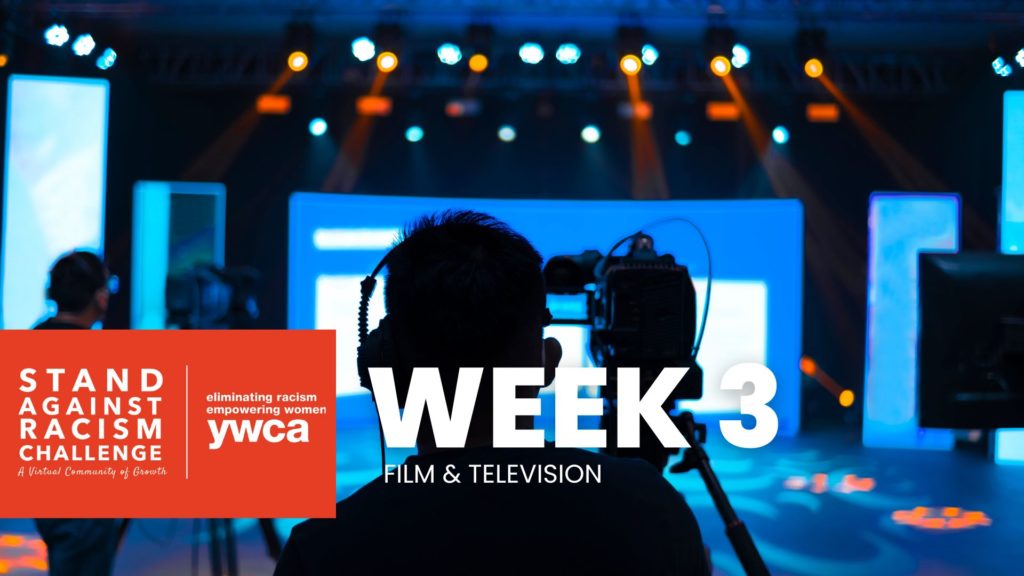
Day 11: Racism & the Origins of Film
The first celluloid film was shot in 1888, just 23 years after the end of the Civil War. Since then, the medium of film has been a powerful tool, both for perpetuating white supremacy and for challenging it. One of the darkest chapters in the history of Hollywood is the institutionalization of the Hays Code 1934 and 1968, a self-imposed set of guidelines that ensured that ideas and depictions in opposition to institutionalized racism, sexism, and homophobia, would not have a platform in mainstream film of the time.
Read this article
about how the film “The Birth of a Nation” which premiered just 50 years after the end of the Civil War and depicted the KKK as the heroes of the post-Civil War south, was used as a recruiting tool and led to a nationwide revival of the Klan in the 1920s
(5 minutes)
Watch this video
on the history of yellowface in film and how Hollywood continues to whitewash Asian characters and how this impacts Asian Americans
(7 minutes)
Watch this video
explaining blackface’s harmful history as a staple of film up through the mid-20th century and how its legacy continues to be deeply damaging for Black representation
(13 minutes)
Read this article
exploring the lives of nine Black trailblazers who helped shape the film industry and how they both challenged, and were sometimes made to play into, the cartoonish, tired, and racist stereotypes pushed by those who held power in Hollywood
(8 minutes)
Day 12: LGBTQ+ Representation
2020 was a high watermark year for LGBTQ+ representation in media. We have come a long way from the Hays code ban depicting gay and lesbian people and the stereotypical gay best friend characters of the ’90s and 2000s. Although a greater number of more nuanced and diverse depictions of queer people are still badly needed, young people searching for representation have a wider variety of characters and stories than ever to share both the struggles and joys of the LGBTQ+ experience.
Read this article
breaking down trans stereotypes and how they became so prevalent. Far too often in media, transgender people are portrayed as violent predators when in reality, they are far more likely than other groups to be victims of violence
(10 minutes)
Watch this video
to better understand how the ‘Gay Best Friend’ trope is reductive and doesn’t allow for diverse representations of LGBTQ+ characters
(20 minutes)
Read this article
of an analysis done by GLAAD to see where we fall in 2020. What does representation in media look like today? How far have we come?
(9 minutes)
Day 13: The War on Islamophobia in Film/Television
Othering is a conscious or unconscious assumption that certain groups pose an imminent threat to the group in power. Othering in mass media has been used to deadly effect and has been one of the most unsuccessful strategies for perpetuating white supremacy. Today, we will be exploring the topic of othering through the lens of Islamophobia and the American media’s response to 9/11 and the War on Terror and its continued impact.
Watch this video
about the prevalence of damaging stereotypes of Muslims in film and television and how the U.S. Department of Defense has influenced depictions of the War on Terror
(5 minutes)
Read this article
or watch the corresponding videos to understand how the experience of Muslims in American has transformed since 2001
(29 minutes)
Read this article
of the progression of Muslim representation in film and television. Read or look over this report to see how Muslims have been represented and misrepresented throughout time on the big screen
(5-30 minutes)
Day 14: Colorism
Colorism and anti-blackness are a bias against people with darker skin and any other features that differ from white, Eurocentric beauty standards. Children with darker skin experience more discipline in school than lighter-skinned people of color and as adults, they face higher rates of hiring discrimination. It is no different in film and television where light-skinned people of color are more likely to be featured, particularly as protagonists and romantic leads, than dark-skinned actors.
Watch this video
of a Huffington Post panel discussing how inclusion in Hollywood means considering how colorism influences the casting of Black, Latinx, and Asian-American roles
(13 minutes)
Read this article
to learn more about how film and television have missed the mark when it comes to diverse Latinx representation
(10 minutes)
Read this article
to learn more about colorism and how it continues to be a persistent problem even as TV characters become more diverse
(15 minutes)
Day 15: The Power of Representation
Marian Wright Edelman, Founder and President of the Children’s Defense Fund said, “You can’t be what you can’t see.” Film and television have a unique power both to inspire us to achieve our goals and to perpetuate stereotypes that keep marginalized people from reaching their full potential. These resources explore both how a lack of representation can be extremely harmful, and how diverse representation can empower people marginalized by racism, sexism, and ableism.
Watch this video
featuring young people sharing how impactful it is to see people who share an identity with them represented in media
(3 minutes)
Watch this video
of a panel of Indigenous actors discuss representation, stereotypes, and why it is important for Hollywood to show the contemporary lives of Indigenous people
(13 minutes)
Read this article
to analyze how the Geena Davis Inclusion Quotient has and will continue to analyze gender representation in film
(15 minutes)
Week 3 Action Steps:
- Over the course of the week, make a note of when you see harmful stereotypes being perpetuated in the movies and TV you watch. What did you find?
- Add 5 movies or shows you have never seen by creators of color or starring a cast of color to your watchlist
- Write down your 5 favorite movies and your 5 favorite shows. Are women and people of color represented?
Week 3 Discussion Questions:
Once you have completed this week’s challenges, we encourage you to take a moment to reflect.
- What was the most impact piece of content you read this week?
- What was the most challenging thing you learned this week?
- How important is it to you to feel represented by the movies and TV you watch?
- What movies or TV shows helped form your ideas about race and racism?
- How, if at all, does learning about tropes in media change the way you engage with the movies and TV shows you watch?
- What is the difference between racism and colorism? How have you seen colorism show up in film and television?
Share each challenge online with #YWCAEquityChallenge


